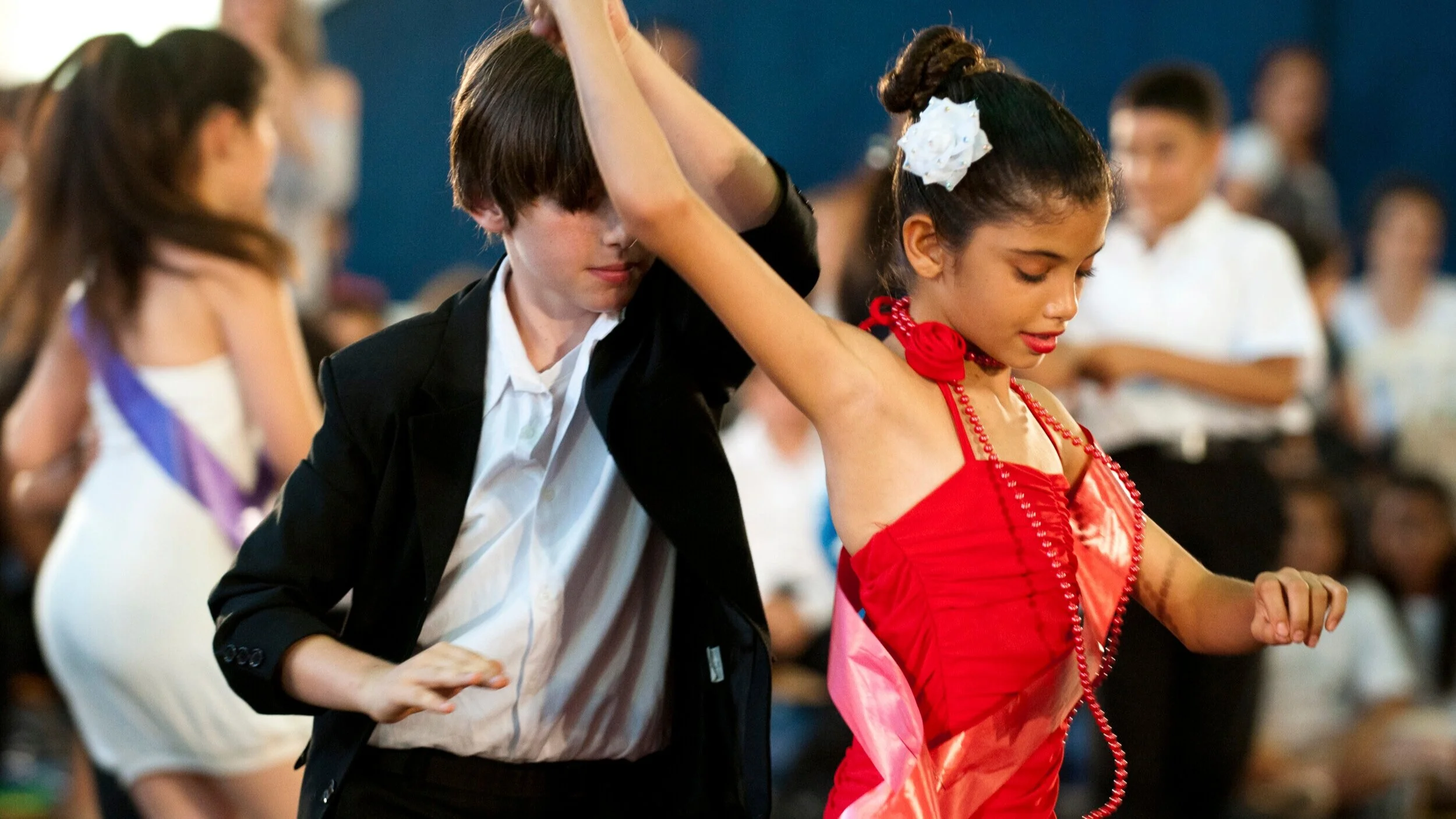Dancing in Jaffa
A special dance project aims at transcending barriers and divisions.
There is much more to this film than one might suppose although in point of fact the inclusion of Jaffa in its title could be counted as a clue to its special intentions. On one level, however, Hilla Medalia's film covers ground that is very familiar from other documentaries. That's because it features youngsters who, having been won over to participate in a dancing project, develop their skills and then take part in a big competition hoping to win awards. One very effective work that followed precisely that pattern was 2005's Mad Hot Ballroom which featured ballroom champion Pierre Dulaine and it is he who is again the central figure here. However, when we see Dulaine returning to Jaffa where he had been born it is with a mission in mind that goes beyond encouraging people to dance.
Given that Jaffa's population has long been a mix of Israelis and Palestinians, Dulaine's plan was to bring the two nationalities directly together through dancing. In the belief that you get to know your partner on the dance floor, he hoped that youngsters brought into contact in this close way would come to recognise the common humanity in each other. To this end he developed his idea by approaching five schools two of which had Israeli pupils, another two of which took Arab students and one, the Weigmann School, where they were combined.
Already at this time long established in America as a noted teacher of dance, Dulaine now set up a Dancing Classrooms programme in Jaffa in which children of both sexes would take part and would in the process have to touch those they might well think of as the enemy. Some of the youngsters were initially reluctant, but when Dulaine's long-time dancing partner Yvonne Marceau came over on a visit she had an impact which won over many of the doubters.
Even if it is slightly overlong, Dancing in Jaffa is definitely engaging, enhanced by good photography and with a style not afraid to aim for popular appeal: it may come close to being sentimental on occasion but it is utterly sincere and the music score is in keeping with that approach. In tracing Dulaine's efforts to give back something to his birthplace, the film also puts special emphasis on three of the children who gained from his programme: there's a girl named Noor who, initially difficult, is seen to blossom through the classes, Alaa whose background is one of poverty and Lois, a girl with a twin, who becomes Alaa's dance partner. These are highly sympathetic portraits which each illustrate the benefits and wisdom behind Dulaine's scheme, one just as admirable as the work done by Daniel Barenboim and the late Edward Said in founding a youth orchestra of international standing, the West-Eastern Divan Orchestra, in which Israelis and Palestinians play side by side. This is a notably warm-hearted film and most audiences will embrace it accordingly.
MANSEL STIMPSON
Featuring Pierre Dulaine, Yvonne Marceau, Rachel Gueta, Alaa Bubali, Lois Dana, Noor Gabai, Oren Halaly, Tai Talman, Lana Zreik.
Dir Hilla Medalia, Pro Diane Nabatoff, Neta Zwebner-Zaibert and Hilla Medalia, Screenplay Philip Shane and Hilla Medalia, Ph Daniel Kedem, Ed Philip Shane and Bob Eisenhardt, Music Krishna Levy and Issar Shulman.
Tiara Blu Films/Know Productions/Ja-Tail Pictures/Warrior Poets/Shine Global/K5 International/Baby George Productions-Sirenic Films.
89 mins. USA/Germany/Israel/UK. 2013. Rel: 13 February 2015. Cert. PG.


